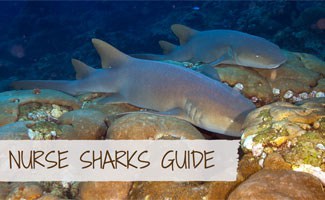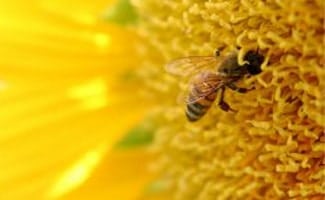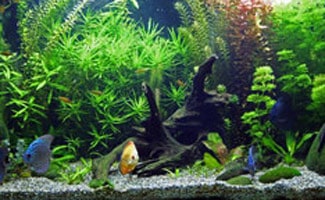Jenday Conure: Loved for its High Intelligence and Beautiful Color
 There are many choices when it comes to keeping pet birds but one of the more favored species is certainly the Jenday conure. The Jenday conure is a long living and sociable parrot that displays intelligence that makes the particularly attractive to potential pet owners. In this article we will not only discuss the features of this brightly colored bird that make it a favorite among pet lovers but also the features that make it such a unique specimen in the wild.
There are many choices when it comes to keeping pet birds but one of the more favored species is certainly the Jenday conure. The Jenday conure is a long living and sociable parrot that displays intelligence that makes the particularly attractive to potential pet owners. In this article we will not only discuss the features of this brightly colored bird that make it a favorite among pet lovers but also the features that make it such a unique specimen in the wild.
What is the Jenday Conure?
The Jenday conure is also recognized as the Jandaya Parakeet or scientifically as the Aratinga jandaya. This beautifully colored parakeet was first discovered in 1788 and continues to thrive as a species in its native habitat of northeastern Brazil.
Taxonomy of the Jenday Conure
The Jenday conure is a member of the Aratinga genus which falls in to the family Psittacidae in the order Psittaciformes. Obviously this intelligent bird also falls in to the Aves class.
The Aves Class
The aves class is known to the layman as “birds” or Avifauna. Creatures that fall in the Aves class are known for being feathered and winged in addition to being bipedal. Aves are warm-blooded and lay eggs unlike many other animals which rely on giving birth to live young. According to the Center for Biological Diversity there are believed to be some 10,000 living species of bird on the face of the planet currently; however, this is merely an estimation as there are most certainly many species that have yet to be discovered. Members of the aves class are distributed throughout the globe including the continent of Antarctica. A great deal of variation occurs within the individual species in the aves class with sizes ranging from two inches long to some nine feet long! Many believe that all of the aves species evolved from dinosaurs and are the closest living relatives to dinosaurs as we know them to have existed. Paleontologists estimate that birds have been around since the late Jurassic period some 150 million years ago. It is believed that there are currently approximately thirty living orders of birds.
The Psittaciformes Order
Just one of the thirty orders of aves that are believed to exist is the Psittaciformes order. Birds within the Psittaciformes order are more commonly referred to as psittacines or parrots. There are believed to currently be some 86 genera within the Psittaciformes order with approximately 372 different species! The majority of these species can be found in subtropical and tropical regions around the world. Birds within the Psittaciformes order are recognized by a number of features including a strong bill that is noticeably curved, clawed feet that are zygodactyl (two toes facing forward and two digits facing backwards, ) and strong legs that allow for an upright stance. While many birds within the Psittaciformes are recognized for having brilliant color displays not all of these birds have the bright brilliant colors that can be seen in parrots like macaws. Unlike many other animal species birds in the Psittaciformes order are not generally known for exhibiting any sexual dimorphism and as such it can be difficult for the average onlooker to determine males from females of the species. One of the biggest attractions in the Psittaciformes for people looking to keep birds is high level of intelligence that characterizes many of these birds. Many Psittaciformes have been recognized for their ability to build a significant vocabulary in addition to being able to closely mimic other creatures or even humans!
Birds in the Psittaciformes order are believed to have begun evolving in the early Eocene era some 54 million years ago. At the present time there are three recognized families of the Psittaciforme order, these include: Cacatuidae, Psittacidae and Strigopidae. The Cacatuidae family is composed of cockatoos, the Psittacidae family is composed of true parrots and the Strigopidae family is composed of New Zealand parrots.
The Psittacidae Family
The Psittacidae family is the family of the Psittaciforme order known as “true parrots.” The Jenday conure is a member of this family. Other birds that are commonly recognized that belong to this family include: blue and gold Macaws, scarlet Macaws, blue-fronted Amazon and the musk lorikeet. The Psittacidae family is actually made up of nine individual tribes which include: Lorini (lories and lorikeets,) Psittacinae (typical parrots,) Arini (American psittacines,) Cyclopsittacini (fig parrots,) Micropsittini (pygmy parrots,) Platycercini (broad tailed parrots,) Psittrichadini (Pesquet’s parrot,) Psittacini (African psittacines,) and Psittaculini (Asian psittacines.) All of these categories of Psittacidae are primarily known for feeding on seeds; however, depending upon the natural location of these birds some are known for also feeding on large amounts of fruit , leaves, nuts, insects and even nectar. Birds in the Psittacidae family are cavity nesting birds and tend to form monogamous pair bonds in the wild.
The Aratinga Genus
Birds within the Aratinga genus are known as American parakeets. These birds are most commonly called conures and are characterized by having rather long tails. Where most birds in this genus are mainly green with smaller portions of other coloring, some are also yellow or orange in color. Birds of the Aratinga genus are sociable birds and prefer not to live on their own forming groups on the wild. As sociable birds when kept in captivity these creatures must not be kept in a solitary environment because they will not be happy and will not be able to thrive. Many species in the Aratinga genus are kept as pets popularly but it is important to recognize the individual needs of each species before deciding to keep one as a pet. The biggest concern in keeping these species in captivity is the large amount of space that a number of them require in order to thrive; as such they should be kept in an aviary rather than a smaller bird cage. Currently there are believed to be some twenty to twenty-five different species of the Aratinga genus.
The Appearance of the Jenday Conure
The Aratinga jandaya species is a medium to small sized parrot that prefers to live in that wooded habitats of northeastern Brazil. On average this brightly colored bird measures in at around 12 inches long and is recognized by its bright orange head and neck. A significant portion of the wings of the Jenday conure is green making it stand out from other colorful bird species to someone unfamiliar with tropical bird species. Conures are also recognized by the loud and shrill call that often turns non-bird lovers away but appeals to those who truly love these intelligent birds. When kept healthy in captivity these birds can live as long as twenty years and as such they require a significant commitment from their owners.
Jenday Conure Diet
| Editor’s Pick |
 SUN Vita Jenday Conure Food SUN Vita Jenday Conure Food |
In their natural environment the Jenday conure feeds on seeds but in captivity it is important to monitor the conures diet since a number of elements can be extremely toxic to these birds. Commonly the Jenday conure are fed with specialized pellet foods that provide excellent nutrition, these pellets should make up approximately 60 to 70% of the birds total diet. The remaining portion of their diet can be made up of fortified seeds, diced fresh fruit (grapes, apples, pomegranates and dark-orange colored fruits,) chopped dark green vegetables, chopped orange vegetables and raisins. It is crucial to always supplement the pellet diet of a Jenday conure with fresh fruits and vegetables on a daily basis but should always be removed when not finished in order to prevent rotting. Like most animals the Jenday conure appreciates variety in its diet and switching up fruits and vegetables is an ideal way to ensure that your captive bird is obtaining adequate variation and vitamin supplementation. The Jenday conure also appreciates protein in their diet occasionally in the form of cooked eggs or boiled chicken; however, these offerings should be limited and fed only over a sixty minute period and removed afterwards if not finished.
Video: What to Feed your Jenday Conure
When feeding your Jenday conure always ensure that your bird has access to clean and chlorine free water on a constant basis in order to maintain hydration. In addition to avoiding chlorinated water it is also important to avoid feeding your captive bird fruit seeds, chocolate, alcohol, caffeine and avocados as these can all cause significant medical conditions.
Jenday Conure Behavior
The Jenday conure is an intelligent bird and as such it requires high levels of stimulation both in the wild and in captivity. Even in the wild these birds thrive on interaction and when humans pass through their territory they prompt interaction. In addition to enjoying human interaction these birds also show human like behaviors such as the desire to “cuddle.” The captive Jenday conure has been seen to prefer cuddling in to something soft when they sleep; however, it is also not unusual for one of these birds to fall asleep on their back on the floor of their enclosure, which can often alarm new owners. Conures, like many other animals with high levels of intelligence, require high levels of exercise and also like to chew frequently. The extreme chewing that is exhibited by the Jenday conure is not a problem in the wild, but when this bird is kept in captivity chewing can become a problem if they are not provided with appropriate toys to chew.
The most appealing characteristics of the Jenday conure are also those which make it so highly desired as a pet. Most appealing of all besides their high levels of intelligence, is the bird’s desire to socialize and their playful behavior. Of course the ability of these birds to learn words and phrases is a pretty big draw as well. Talking is not a significant occurrence for the Jenday conure as it is for many other parrot species but these birds have been known to pick up a basic vocabulary over time.
The Natural Habitat of the Jenday Conure
When not being kept in captivity the Jenday conure makes its home in tree cavities in the woodlands of northeastern Brazil. Tree hollows provide the perfect living location for these birds as it provides shelter that can hold large weight loads as well as provide easier access to food sources. The average hollow in which the Jenday conure makes it home is around fifty feet from the woodland ground.
The Reproductive Habits of the Jenday Conure
The Jenday conure like all aves is an egg layer. The Jenday conure can be bred throughout the year but it is important to pay attention to the meteorological conditions prior to allowing a breeding pair to mate. While these birds can breed year round they should not be allowed to breed in temperatures that rise above ninety degrees Fahrenheit since the young Jenday conure cannot survive this extreme heat. When bred, the female Jenday conure will lay anywhere from two to four eggs which are white in appearance and tend to incubate for around twenty-six days. After hatching the young conures will be cared for by both parents who share the responsibility of feeding their young. Approximately seven weeks after hatching the chicks are ready to fledge. The lifespan of a Jenday conure varies in the wild due to any number of factors including the encroachment of man in to their territory, their capture as pets and common diseases and parasites.
Housing a Captive Jenday Conure
| Editor’s Pick |
 Wrought Iron Bird Cage Wrought Iron Bird Cage |
The Jenday conure adapts well to the average household climate but it is important to ensure that your bird is not exposed to drafts or extreme temperature changes as these can cause distress. Your enclosure for your conure should always be kept off the floor and placed in a well-lit area. The suggested size enclosure for the Jenday conure is approximately 24″ W x 24″ D x 30″ H, but it is also important to provide a flight cage so that your bird is able to spread their wings and exercise sufficiently. As with all captive animals the larger the enclosure that you provide for your bird, the happier your bird is going to be. It is crucial, as with any bird, to provide perches for the conure to sit upon. These perches should be around 9” long and around ½” in diameter but it does help to keep feet exercised to have a few different perches in the cage that vary in width. It is also important for the health of your bird to ensure that your enclosure has a metal grate covering the dropping tray so that your bird is not able to get near their feces. It is also crucial to make sure that all food and water sources are kept away from perches where they could be exposed to fecal waste.
The cage of the Jenday conure should be lined with a cage liner or substrate that is changed often. The general rule of thumb is to change liner or substrate once a week but if your bird seems to be particularly “active” in terms of their bowel habits you should clean the cage liner more often. The rest of the cage and perches and toys should also be cleaned and disinfected regularly to ensure proper health. Once toys and perches begin to show signs of wear and tear they should be removed and replaced in order to prevent your bird from ingesting pieces of them. It is also helpful to switch out toys in your birds cage each time it is cleaned in order to make sure that your Jenday conure remains well stimulated.
A Healthy Captive Jenday Conure
A healthy captive Jenday conure is important in ensuring a long and comfortable life for your bird; however, without proper education it can be difficult to ascertain when your bird is not feeling their best. There are some signs that you can watch for to ensure that the bird you are purchasing and or caring for is a healthy one. A healthy Jenday conure is alert and active in their enclosure, they are also sociable both with other birds, with their toys and with humans. A healthy conure will eat and drink throughout the day and will have smooth and well-groomed feathers. A healthy conure will also have a clean, dry vent and dry nostrils. Finally a healthy conure will also have bright dry eyes and a beak, legs and feet that appear normal and are free of abnormalities.
Causes For Concern in a Captive Jenday Conure
A captive Jenday conure may develop illness or already have illness when you purchase them. It is important to be able to identify signs of illness in your bird in order to treat it before it becomes a significant and life threatening concern. Some of the biggest red flags that you should look for if you believe that a Jenday conure is not healthy include: swelling of the beak, discharge or accumulation on the beak, eyes or nostrils, wheezing, coughing, soiled feathers, plucked feathers, fluffed feathers, runny stools, discolored stools, red eyes, swollen eyes, a lack of appetite, favoring one foot over the other and sitting on the floor of the habitat. If you notice any of these signs in your conure it is important that you seek veterinarian assistance immediately.
Benefits to Keeping a Jenday Conure
Reading the above information on the Jenday conure it may seem like a lot of work goes in to keeping these unique pets. The work that goes in to keeping a Jenday conure however, is the same level of care that any other medium-sized bird requires. It is crucial that you are able to provide the amount of care and exercise (both physical and mental) that this bird requires however, in order to have a healthy bird. There are many benefits to keeping a Jenday conure though, including the sociability of the bird, the beautiful coloration and the companionship that they provide. In short, if you feel that you are prepared to spend the next thirty years or so with your new companion then the Jenday conure may be the right pet for you!
Do you have a Jenday conure?



